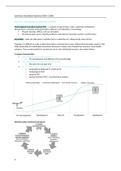Samenvatting
Summary Innovation Systems (GEO1-2208)
- Instelling
- Universiteit Utrecht (UU)
De collegesheets zijn samengevat en aangevuld met opmerkingen vanuit de colleges inclusief oefenvragen voor het tentamen. Gehaald tentamencijfer: 8,2
[Meer zien]




